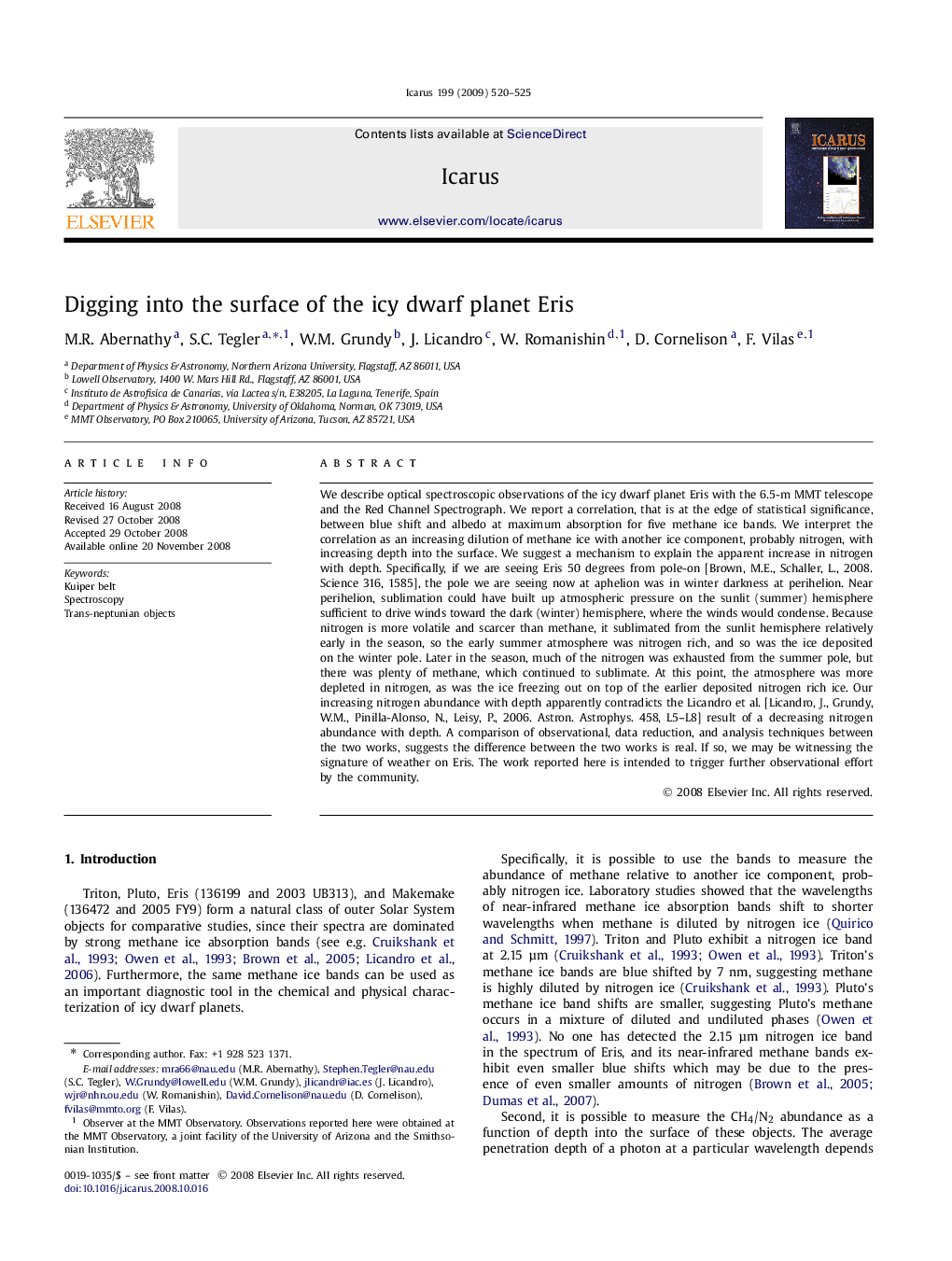| کد مقاله | کد نشریه | سال انتشار | مقاله انگلیسی | نسخه تمام متن |
|---|---|---|---|---|
| 1775549 | 1021197 | 2009 | 6 صفحه PDF | دانلود رایگان |

We describe optical spectroscopic observations of the icy dwarf planet Eris with the 6.5-m MMT telescope and the Red Channel Spectrograph. We report a correlation, that is at the edge of statistical significance, between blue shift and albedo at maximum absorption for five methane ice bands. We interpret the correlation as an increasing dilution of methane ice with another ice component, probably nitrogen, with increasing depth into the surface. We suggest a mechanism to explain the apparent increase in nitrogen with depth. Specifically, if we are seeing Eris 50 degrees from pole-on [Brown, M.E., Schaller, L., 2008. Science 316, 1585], the pole we are seeing now at aphelion was in winter darkness at perihelion. Near perihelion, sublimation could have built up atmospheric pressure on the sunlit (summer) hemisphere sufficient to drive winds toward the dark (winter) hemisphere, where the winds would condense. Because nitrogen is more volatile and scarcer than methane, it sublimated from the sunlit hemisphere relatively early in the season, so the early summer atmosphere was nitrogen rich, and so was the ice deposited on the winter pole. Later in the season, much of the nitrogen was exhausted from the summer pole, but there was plenty of methane, which continued to sublimate. At this point, the atmosphere was more depleted in nitrogen, as was the ice freezing out on top of the earlier deposited nitrogen rich ice. Our increasing nitrogen abundance with depth apparently contradicts the Licandro et al. [Licandro, J., Grundy, W.M., Pinilla-Alonso, N., Leisy, P., 2006. Astron. Astrophys. 458, L5–L8] result of a decreasing nitrogen abundance with depth. A comparison of observational, data reduction, and analysis techniques between the two works, suggests the difference between the two works is real. If so, we may be witnessing the signature of weather on Eris. The work reported here is intended to trigger further observational effort by the community.
Journal: Icarus - Volume 199, Issue 2, February 2009, Pages 520–525